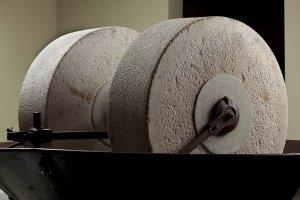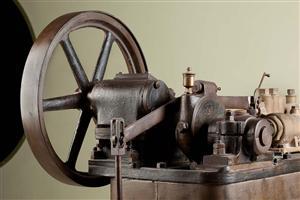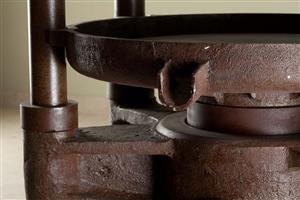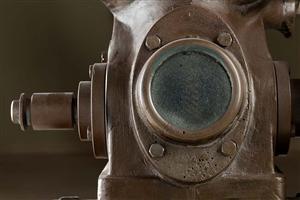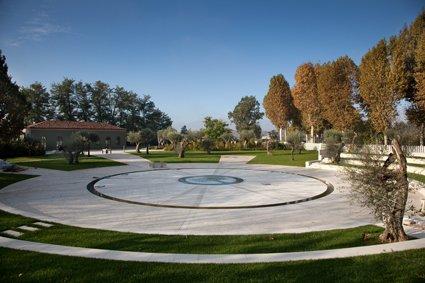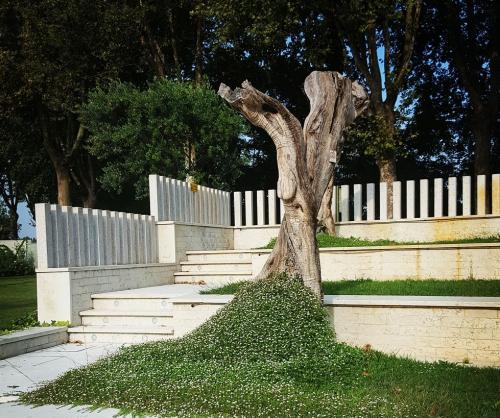A voyage among the fables and myths of the castle. Visiting the Rossi fortress in San Secondo Parmense allows for a fascinating discovery, and a departure point for an itinerary taking in culture, food and wine.
The fortress, at the centre of the town, takes the original nucleus as designed by Pier Maria Rossi in the 1400s, which was then transformed during the 16th century into a monumental residence. Today it maintains its important, luxurious décor, and serves as an authentic, illustrated archive of the Rossi family’s affairs – one of the most important families in the Parma area. It can be found inside the Sala della Gesta. The fortress holds artistic works from Giulio Romano, Baglione, Samacchini, Bertoja an Proaccini. Among the preserved frescoes you will find the tale, in 17 frames, of the “Golden Ass”, a famous tale written by the Latin writer Apuleio.
Wandering through the streets in the historical centre, you can see the spaces of the old “hamlets”, made of typical medieval-style housing, with small, low doors and porticoes linked to the social structure of the time, principally artisan and mono-familiar. Around the fortress you will come across important religious buildings, of notable historical-artistic quality, like the Collegiate Church of Our Lady. It is in the centre of the town, and was built in 1450 following Pier Maria II de Rossi’s desire.
It originally had one central nave, in Latin cross layout, but then in 1700 it was rebuilt and enlarged. The church was heavily restored in 1854, and in 1864 the facade was remade following the designs of local architect Pancrazio Soncini. The church also has an important art gallery, in which there are paintings from artist liks Pier Antonio Bernabei, Giovanni Sons e Antonio Bresciani.
During a stroll around the town, you will come across several buildings, including the Oratorio di San Luigi o del Riscatto, built between 1717 and 1728. The church was built to a Greek-cross plan, and the interior is beautifully decorated with intricate plasterwork. Completing the décor is a wonderfully carved wooden altar, decorated with neoclassical golden adornments, sitting on a refined wooden painted stage. The name comes from the statue of the saint found inside the church.
Another authentic joy to be found in the town is the Oratorio della Beata Virgine di Serraglio, which was built around 1670, but later, between 1685 and 1687 it was enlarged at the request of Count Scipione I de’ Rossi. Ferdinando Ricci also contributed to the decoration of the cupola, and Ferdinando Galli da Bibbiena worked on the structure and decoration of the walls.
In the centre of the town, you will find the Misericordia Hospital, commissioned by Count Federico I in 1630 to help plague victims. It has recently been restructured.
San Secondo also had a theatre, built around 1853, with a curtain painted by Girolamo Magnani, the famous scenographer to Giuseppe Verdi. In 1928 the building underwent work to transform it into a cinema: the stage was removed, then later in the 50s the dais was also removed to increase the capacity. It remained a cinema until the early 1980s. The original structure remains, with its neoclassical façade, where you can still see some bas-reliefs in plaster depicting Verdi and Rossini.
In the nearby countryside, you can find the Romanesque parish church of San Gensio, dating back to the 9th century. It was damaged by a flood in the 13th century, but was then rebuilt. It was crumbling and close to falling down, but was saved in 1967 with restoration work which restored the church to its former glory.
In San Secondo the antique art of oil production lives on at the Museo Agorà Oris Coppini.
It forms part of the “Food Museums” network, and was born thanks to the passion for olive trees that Anita and Americo Coppini had, who were oil producers from 1946. The passion lives on today, after three generations, in the hearts of the Coppini family. Old archive documents dating as far back as the 12th century testify that olives have been cultivated in the province of Parma. The Orsi Coppini family wanted to dedicate a space that allows us to get to know and appreciate this wonderful product. Inside the museum there are many spaces dedicated to the history of oil and the old ways of production, as well as a large open-air theatre surrounded by olive trees which is used for concerts, performances and events.
A further famous event in San Secondo is the “Palio delle Contrade” which links back to the historical wedding between Conte Pier Maria III de’ Rossi and Camilla Gonzaga held in 1523. There are six contrade that fight for the title in the event held on the first weekend of June: on the Friday the nightlife starts, with the group contest with musicians and flag-bearers, and the ceremony of the votive candle. On the Saturday, with the arrival of the Counts, the procession begins. On the Sunday, there is the race, running with some of the smallest rings in Italy.
In August, we see the modern version of a thousand-year-old festival, which is now the “Fiera della Spalla di San Secondo e della Fortanina”. Most probably the country festival was originally celebrated at the Romanesque parish church of San Genesio on the 25th of August, but was later moved to the fortress in the town. There are mentions of it dating back to 1571, known as the “Fiera di San Genesio”. Since 1956 it has taken its current name, and is celebrated on the last Sunday in August, dedicating itself to the Spalla di San Secondo, a typical salami that has been famous since 1170. Giuseppe Verdi was also famously a fan of the delicacy.
It pairs well with a rich, sparkling red wine, Fortanina, which has found its ideal home in the “strong ground” of this area.

